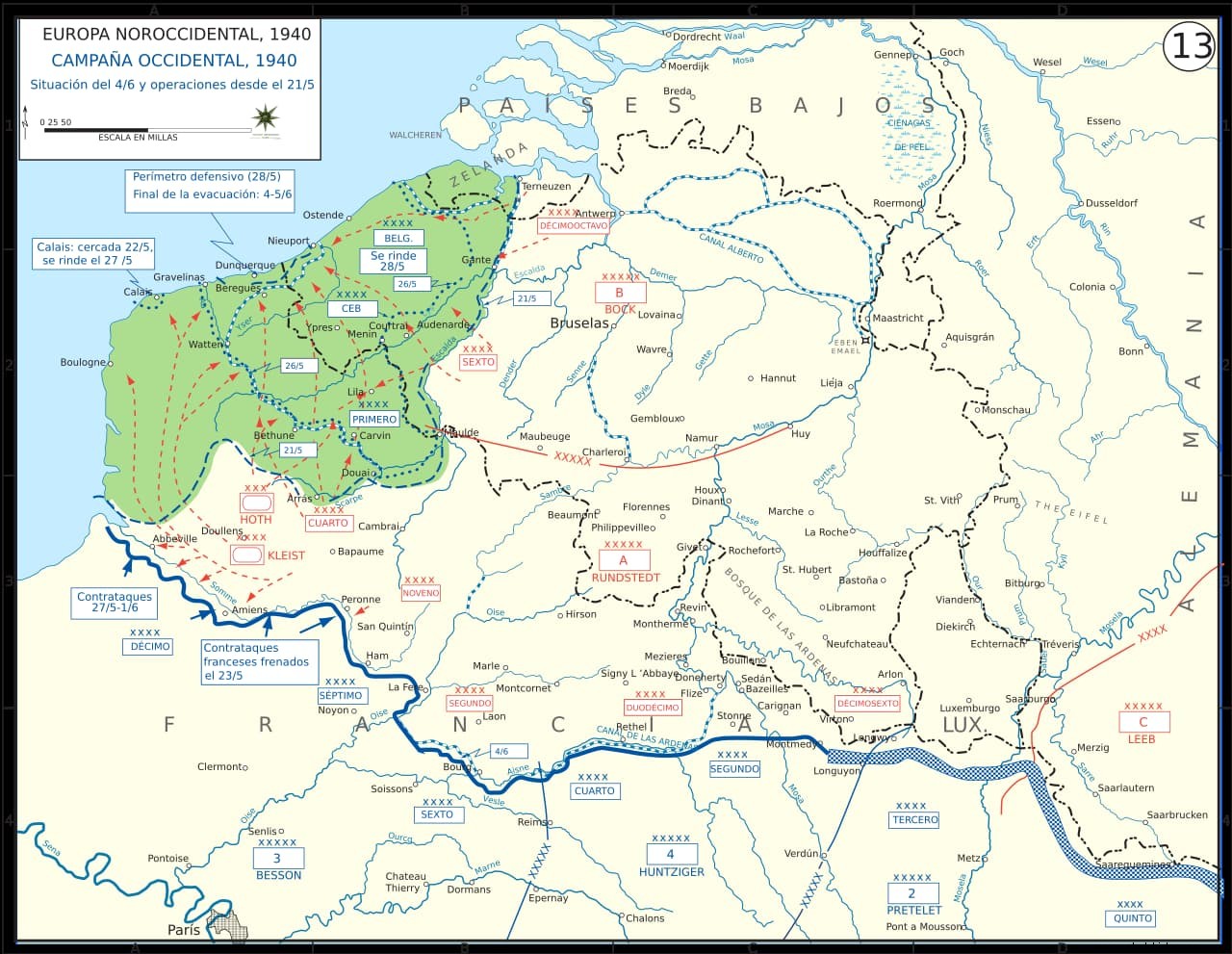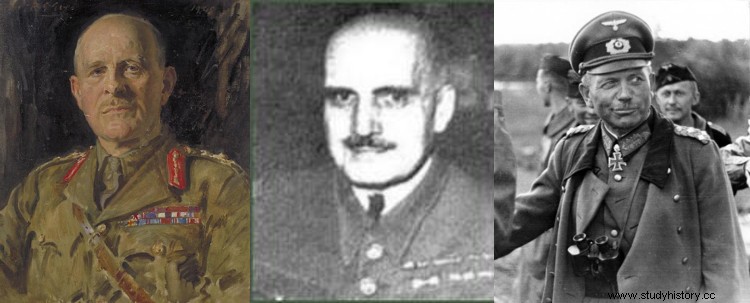If we talk about World War II battles, the names of some that are already an inevitable reference will come to mind, from Stalingrad to Berlin, passing through El Alamein, Pearl Harbor, Guadalcanal, The Ardennes and several other very famous ones. But there were others that are not as well known, even when some had transcendental importance for the course of the war. This is what happens with the Siege of Lille, which is framed in the context of a larger one, that of France in the early stages of the conflict, and was essential in allowing the evacuation of Dunkirk.
Winston Churchill himself reviewed it as vital in his work The Second World War (The Second World War), something that many war correspondents and historians have corroborated, considering that the tenacious resistance presented in Lille by the French IV and V Corps held numerous German forces for almost four days, thus allowing the BEF (British Expeditionary Force) saving precious time that meant saving, according to estimates by some authors, up to 100,000 more soldiers than originally planned.
Lille is an inland city located in the Upper France region, on the Belgian border, about 65 kilometers from the coastal Dunkerque. When the joint attempt of the French Army and the BEF to stop the German advance in Belgium during the spring of 1940 failed, it became clear that a withdrawal into the French country would be too complicated for logistical and geographical reasons, so an original option was chosen. , albeit risky, alternative:evacuate troops by sea.

It wasn't easy either, since it was a question of removing tens of thousands of men (or so it was calculated; wrongly, because later it would be hundreds of thousands). And besides, it had to be done quickly, before the enemy fell on them, marching unstoppably in that direction. But the Royal Navy had already been assembling ships for it and began what was called Operation Dynamo . The weather helped the BEF, as the armored units of General Heinz Guderian, the genius creator of the Blitzkrieg or blitzkrieg, were hampered by bad weather; also because of the confrontation that he had with Marshal Von Kluge, who ordered him to put the brakes on his impetus to push the allies towards the coast following Hitler's instructions.
All these events had taken place in a dizzying way, in just eight months. The BEF landed in France in September 1939 with four divisions under the command of John Vereker Gort, a veteran of the First World War decorated for his heroism who had insistently advocated the creation of that force in the conviction -correctly- that France would not She had the ability to defend herself. The BEF entered Belgium, receiving another 13 reinforcement divisions in May 1940... and on the 19th of that month it was assumed that there was nothing to do, on the 24th the plan to counterattack from the south was discarded and on the 26th the evacuation began .
On the night of the 27th, after King Leopold III had surrendered Belgium, leaving the land open to the Wehrmacht, most of the British had managed to concentrate on the River Lys, a river course that begins in the French town of Lisbourg and flows into the Scheldt at the height of the Belgian city of Ghent, after a course of 195 kilometers, of which 24.6 form the border between the two countries. However, only the Gallic III Corps was able to join them, as the other two operating in the area were trapped in Lille.

They were the aforementioned IV and V, directed respectively by Generals Aymes and Altmayer under the command of Jean-Baptiste Molinié (because he was the oldest rank), who together with the III were part of the 1 re Arm commanded by General René Prioux and were largely made up of native soldiers from the protectorates of Algeria, Tunisia and Morocco, including what would later become known as pied-noirs (Europeans residing in North Africa). Both were hit and had to dig in at Lille, which was immediately besieged by three Panzer divisions (the 4th, 5th and 7th) and four infantry divisions (11th, 217th, 253rd and 267th) under Kurt Waeger.
The disproportion was evident because the defenders barely numbered 30,000 French plus 5,000 British and lacked sufficient armored units, so prolonged resistance was a pipe dream. In fact, attempts were made to break the siege on two occasions. One took place on the morning of the 28th and it was double, since it was carried out simultaneously by the 2e DINA (2e Division d’Infanterie Nord-africaine ) of Major General Pierre Dame, made up of Algerian riflemen and artillerymen, and the 5e DINA (52e Division d’Infanterie Nord-africaine ) of Division General Augustin Agliany, made up of Moroccans and Tunisians. The first attempted to cross the Deûle while the second crossed the Moulin Rouge bridge. . Both failed, although during those attempts he pocketed and captured numerous Germans, including General Fritz Kuhn.
On the 29th a second attempt was made, which was also unsuccessful because although two companies and some tanks managed to cross the bridge, they had to turn around before the barrage of fire that the Germans launched on them. So Molinié decided to give up the exits and prepared himself for a staunch defense in the city. The battle took place mainly in the suburbs of Lille, where the French forced the Germans to take house by house. However, the superiority of the attackers and the lack of food and ammunition for a position that, after all, had had to be improvised -and also with the civilian population trapped-, led to an agreement to capitulate. 
On the night of May 31, hostilities ceased, and the next morning, Waeger honored the surrendered troops by allowing them to parade their weapons before their own in formation (which, by the way, cost him to be dismissed by an enraged Hitler). . The French had held out for four days. A priori It doesn't sound like much, but that time served for the German ground divisions to divert their attention from the beaches of Dunkirk, where the pressure was only carried out by the Luftwaffe, allowing Gort to organize a defense to cover the evacuation. When Guderian was able to resume his operations he found a barrier hampering him, aggravated by unsuitable terrain for his tanks.
The result was that Operation Dynamo , completed on June 4, pulled no fewer than 224,000 British and 95,000 Allied soldiers out of that rathole, even though tens of thousands of vehicles, guns and half a million tons of supplies were left behind. They also left behind 68,000 fallen but the thing could have been a catastrophe without parallel in military history and if it was not, it was due, in part, to the selfless defenders of the Siege of Lille.
